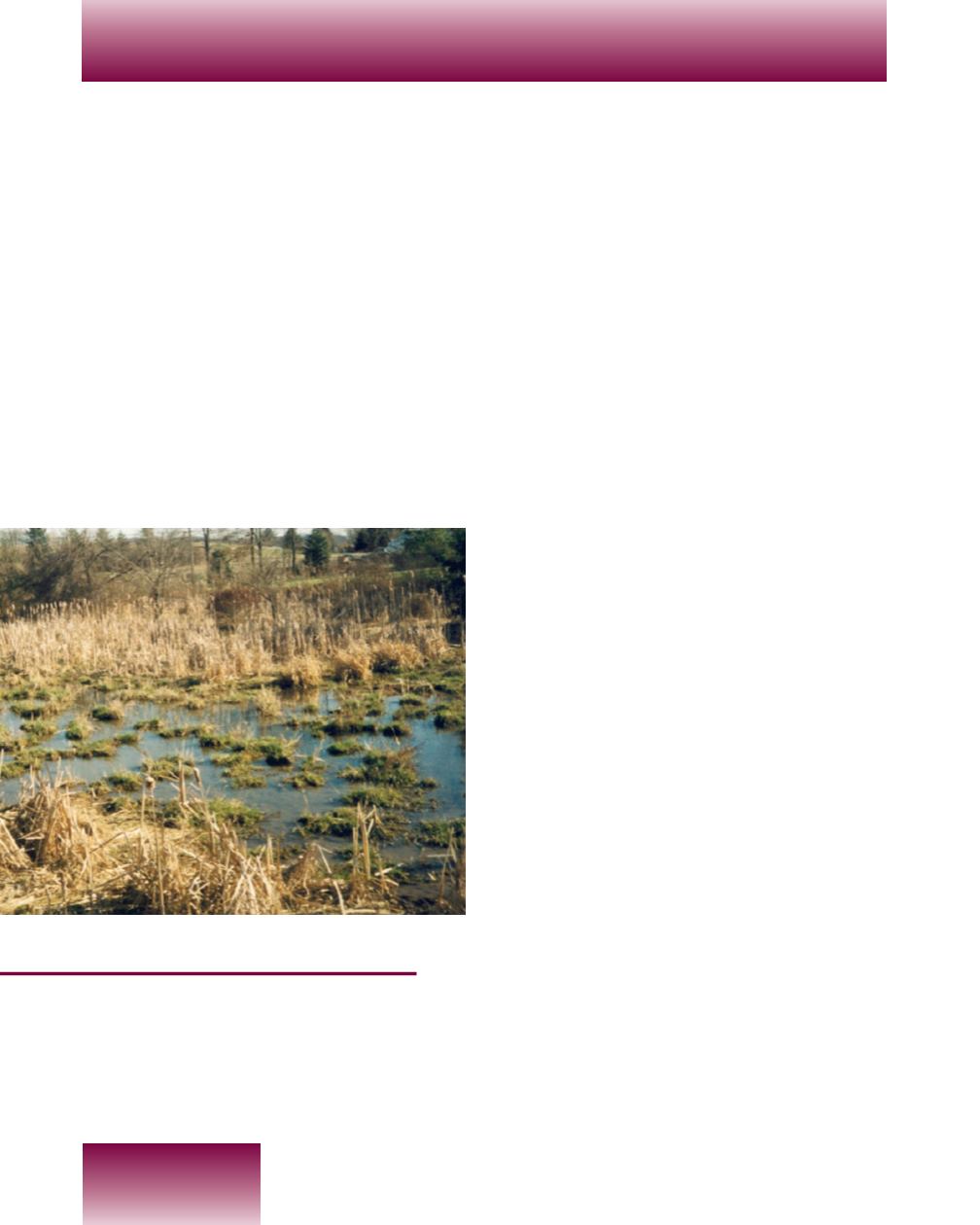
Run-off is rain or melted snow that flows
across the surface of the land until it
reaches a body of water such as a stream,
river, or lake. Sometimes, farmers build
small ponds to collect the run-off water.
Look at it as a draining process! The water
has to travel somewhere.
Not all precipitation that falls to the earth
becomes run-off water. Some of it seeps into
the earth to become
ground water
.
Ground water feeds springs that are small
streams flowing from the ground.
Sometimes, springs feed natural ponds that
are smaller bodies of water than lakes. There
aremany springs located in the valleys, hills,
plateaus, andmountains of Pennsylvania.
Our state also has several thousand
natural lakes. Remember howmost of these
natural lakes were formed by glaciers in the
north. All of our lakes are small, except for
one. Can you guess what lake it is? Lake
Erie is the fourth largest lake in the
United States.
There is another important part of our
environment that has been drawing
attention. People who are asking to keep
our environment clean have also been
asking us to save our
wetlands
. Awetland
is a lowland area that holds water. It’s kind
of a swampy place wheremanywild plants
and animals live. Our state has about
200,000 acres ofwetland.Muchof this land
is located where the glaciers once covered
the earth.
Our Reservoirs
andDams
A
ll of Pennsylvania’s largest lakes are
reservoirs
. Reservoirs are human-
made lakes in which water held
back by
dams
is stored. Dams are not a
natural resource, butmany of thematerials
used to build dams are natural resources.
Our state has built 14main dams. It can
be confusing, but reservoirs can be called a
lake, dam, or reservoir! They all have the
same purpose — storing water. Our largest
human-made lake fully within the
boundaries of Pennsylvania is Raystown
Lake. It is located in central Pennsylvania.
Shamokin Dam is also located in central
Pennsylvania.
To the northeast, we have the Francis
Walter Dam and Lake Wallenpaupack. To
the north, we have the Tioga-Hammond
Lakes and the Allegheny Reservoir. In the
west, the Pymatuning Reservoir is located.
To the south, the Youghiogheny Dam is
situated. The last three dams store water
that extends into other states.
26
●
Chapter 2
How do you know that the area in this
picture is awetland area?


